March 7, 8 & 9, 2025
Jones Hall
Houston, Texas – USA
Houston Symphony, Andrés Orozco-Estrada, conductor; Francesca Dego, violin; Houston Symphony Chorus, Julia Hall, interim director .
Johannes BRAHMS: Violin Concerto in D major, Op. 77 (1878)
Richard STRAUSS: Also Sprach Zarathustra, Op. 30 (1896)
Johannes BRAHMS: Schicksaslied (“Song of Destiny”), Op. 54 (1868-1871)
Lawrence Wheeler | 9 MAR 2025
Former Music Director and Conductor Laureate Andrés Orozco-Estrada returned to Jones Hall to conduct the Houston Symphony in a program of works by Johannes Brahms and Richard Strauss. Making her Houston debut was Italian-American violinist Francesca Dego performing Brahms’ Violin Concerto. Based in London, she was called in to substitute for Hilary Hahn, who recently recovered from a nerve injury. Hahn just performed the Brahms concerto with the New York Philharmonic, her first concert in seven months, but had to postpone appearances with the Houston Symphony and the Philadelphia Orchestra.
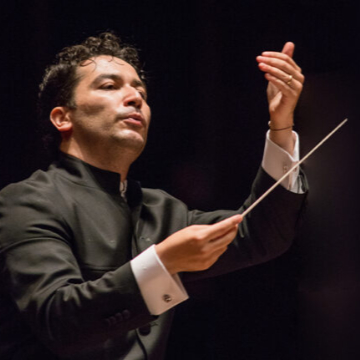
Andres Orozco-Estrada (courtesy of Houston Symphony)
It is fairly unusual to begin a concert with a concerto, which would typically follow an overture or concert-piece. But given that Brahms’ Violin Concerto is symphonic in scope, with an extensive orchestral opening, it can work. And work it did. The orchestra knows this piece quite well and knows how to make it work–important since music by Brahms does not play itself. Orozco-Estrada led an exceptional account–phrases were finely shaped, and dynamics were true to text. The opening theme had long lines, and the discreet tapering of notes before rests artfully avoided false accents. The first violins were unified and brilliant in high passages. The shifts from major to minor were imbued with correlating character while building to the dramatic entrance of the solo violin.
Francesca Dego entered with an explosion of energy, countering the orchestra’s volume with dramatic flair. Immediately taking command, she drew the audience into her musical world, alternately extroverted and introverted. Producing a lovely sound from her 1697 Ruggeri violin, she tested dynamic extremes with variable results. Dego offered a beautiful interpretation, but some passages were covered by Brahms’ rich orchestration.
Rather than the standard cadenza written by Joseph Joachim, the first movement cadenza Dego used was written by Ferruccio Busoni, an Italian pianist and composer from the early 20th century. It is notable for its inclusion of timpani, then strings. Last year, Dego recorded the Busoni and Brahms violin concertos, making this choice logical and interesting. Timpanist Matthew Strauss provided astutely sensitive support.
Woodwinds open the second movement “Adagio,” led by Anne Leek’s vocal oboe solos. Dego tenderly interacted with the orchestra, but her placing of swells on individual notes, while meant to be expressive, was distracting. Audible shifts, as opposed to expressive slides, also interrupted the musical line. The movement did effectively showcase her beautiful sound.
The “Rondo” was imbued with Hungarian swagger, along with Dego’s tossed hair. Phrase-ending notes finished dramatically with the bow high in the air, but too often accompanied by a swell perhaps more suited to Wieniawski than Brahms. The show was well-received by the Jones Hall audience, who rewarded Dego with several curtain calls. In return, she performed Polish Caprice by Grażyna Bacewicz. The difficult piece was very well played, with Dego ending on a humorous note.
Strauss’ Also Sprach Zarathustra (“Thus Spake Zarathustra”), is an orchestral tour-de-force. Enhanced by the hall’s renovated acoustics, the Houston Symphony provided a thrilling virtuoso performance. Orozco-Estrada is used to playing this instrument, and the musicians responded with spirited playing.
The opening “dawn” motif was dynamically shaped, with the organ sound prevailing. Leonardo Soto played the iconic timpani beats firmly while maintaining a triplet pulse. Beginning with two solo violas, then adding solo cello and violin, the strings grew in sonic splendor, reaching a thrilling climax. The contrasting fugue subject began stoically, with each divisi bass and cello part playing their exposed lines cleanly and accurately. As the music grew in volume and complexity, each added section maintained that clarity and precision, including rapidly descending chromatic scales. Principal trumpet Mark Hughes nailed his high C octave jump. Concertmaster Yoonshin Song played her waltzing solo with customary accuracy. The solo woodwinds played with color and character, and the brass section impressively filled the hall. Principal percussionist Brian Del Signore rang the specially made Houston Symphony bell to signal midnight.
The end is an unsolved riddle, with the two keys at play — B major, representing humanity, and C major, representing the universe — providing no clear answer. With the Doomsday Clock currently set at 89 seconds to midnight, this piece serves as an allegory of humanity’s uncertain future.
Brahms’ Schicksaslied (“Song of Destiny”) was performed attacca after the Strauss. The abrupt harmonic and stylistic change from the Strauss would have benefitted from an additional 20 seconds of delay. It begins with an orchestral prelude in E-flat major reminiscent of his German Requiem. Orozco-Estrada encouraged expressive playing from the orchestra, who again showed their affinity for Brahms’ orchestral color.
The chorus remained seated at the beginning, standing later as the dynamics grew. Well-prepared by their interim director, the chorus sang clearly and on pitch, with a huge dynamic range. Of note was their collective spirit and intent to communicate. The original text is from a poem by Friedrich Hölderlin. While the poem ends in despair (“They falter, they perish, poor suffering mortals”), Brahms chose to end this piece more optimistically, sans chorus, with an orchestral postlude in C major.
I am left wondering if reversing the last two pieces would have been more effective, if not appropriate. Since the Brahms ends in C major, it would flow seamlessly into Also Sprach Zarathustra, which begins in C major. That piece’s ending, being unresolved and therefore uncertain, could relate to the current political climate. ■
EXTERNAL LINKS:
- Houston Symphony: houstonsymphony.org
- Andrés Orozco-Estrada: orozco-estrada.com
- Francesca Dego: francescadego.com
- Ekaterina Gubanova: hilbert.de/en/artists/singers/mezzo-soprano/ekaterina-gubanova

Read more by Lawrence Wheeler.
RECENT POSTS
 Tine Thing Helseth brings fire and finesse to trumpet concertos by Arutiunian, Penderecki, and Weinberg • 24 Oct 2025
Tine Thing Helseth brings fire and finesse to trumpet concertos by Arutiunian, Penderecki, and Weinberg • 24 Oct 2025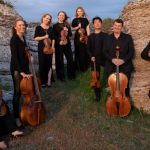 Camerata Nordica Octet brings Scandinavian color and classical clarity to Hodgson Hall • 21 Oct 2025
Camerata Nordica Octet brings Scandinavian color and classical clarity to Hodgson Hall • 21 Oct 2025

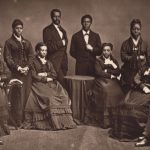
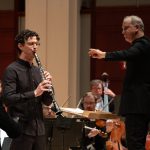
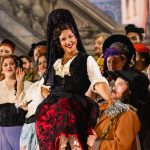
.png)